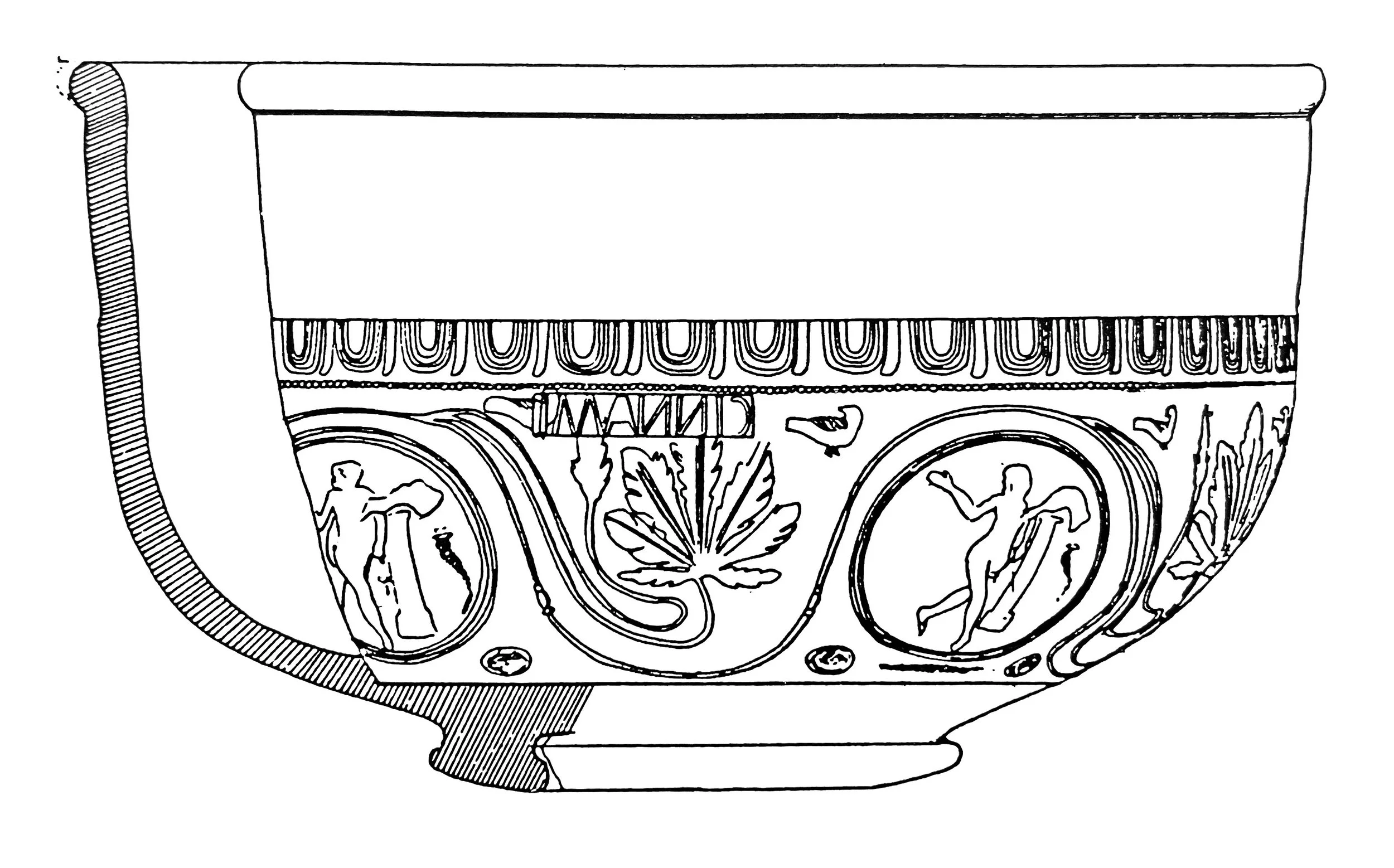Major West Kent Discovery: A Roman Villa Excavated
Major West Kent Discovery: A Roman Villa Excavated
by Roger Cockett and Ted Connell
Throughout the latter half of 1986, members of the K.A.S., assisted by many local people, have been excavating a newly discovered Roman building at Sedgebrook, Plaxtol, Kent.

The Site
The site is in a field on a slight promontory above the upper course of the River Bourne, a tributary of the Medway. It is approximately at the junction of the Wealden Clay and Greensand beds and is on the natural springline.
Earlier work on the site
Ploughing in 1956 brought to light Roman tiles and pottery and resulted in the antiquity symbol being shown on the O.S. map. The field has remained under permanent pasture since then. Trial trenching in May 1984 by members of the Tonbridge School Archaeological Society encountered a Roman tile layer and a mortar floor.
Prospective development
The field and the whole estate has recently changed hands and the new owners intended to improve the land by laying a field drain across the site and by subsoiling the whole field. Subsoiling involves passing a chisel blade and mole across the whole area to a depth of at least half a metre, to lift and crack the soil pan. Members of the Plaxtol Local History Society asked for permission to carry out exploratory excavations to define the extent and nature of the site before it was destroyed. The Kent Archaeological Society Fieldwork Committee were approached for assistance and Roger Cockett very kindly agreed to direct the ensuing excavations.
The Excavation
On a fine Sunday in early July last year, more than thirty people gathered to commence the excavation. Amazingly, the initial 2m wide trench immediately found a wall and mortar floor. A grid was set out and over the following months area excavation of the topsoil uncovered all the wall tops of a building, except for its SW corner where its extent is uncertain (see plan and photo). Excavation of the undisturbed layers then began in and around the building with the continuing help of many K.A.S. members, members of nearby Affiliated Societies, and people from the Plaxtol area.
The Building
The building is a winged-corridor type house, 25m x 11.5m, facing east. The walls are of white ragstone in yellow mortar, around a rubble core. As the house is sited on the edge of a slope, the walls on the West and North West are up to 1m deeper than elsewhere. The central room of the house (Area 1.0) was the first built as all other walls butt against it. It measures 16m x 5.5m internally. The foundations were laid in trenches cut into an earlier occupation layer.

Excavation of the North wing revealed two rooms (2.1 and 2.2), one of which (2.1) was at least 1.5m deep. The lower part was filled with clay, much of it scorched or burnt, and contained a mass of roofing tile and the broken remains of what is best described as a Roman dinner service! (see drawing of reconstructed Samian bowl.) The whole room had later been filled up with masses of rubble for a floor at a higher level. Room 2.2, by contrast, had shallow foundations, overlaying what appears to be an earlier kiln-like structure.
Little work has been done on the South wing (Area 3.0), but pilae, floor tiles, and small blocks of tesserae were found just beneath the topsoil. The floor has probably been ploughed away, but there are indications of hypocaust channels.
The corridor (Area 4.0) is 16m x 2.5m. Much of its mortar floor survives but has been scraped and scored by the plough in centuries past. A large offset facing block may represent the jamb of a central entrance.
East of the corridor, a substantial layer of roof tile was found beneath the topsoil, much of it apparently undisturbed since the building collapsed in late Roman times. Two complete tegulae were recovered, unusually with nails still in position in the top edge. The excellent state of preservation of the fallen tile has prompted us to remove all the tile for study, with the intention of calculating the form and dimensions of the original roof.

Finds
Iron nails from the collapsed roof have been found in some quantity over the site and mostly well preserved. Amongst other material, bone has been sparse to date but there has been oyster shell from most of the upper layers. Pottery recovered so far ranges from early 1st-century coarsewares and samian, right through to third-century wares such as Oxford colour-coated and parchment wares, thus indicating a long span of Roman occupation of the site.
Future work
The excavations may be backfilled and the land returned to agricultural use by the end of the year.
We are planning to start work over the Easter weekend and continue each Sunday during May and June. After a break in July, work will resume in August with a full week of continuous digging and then carry on each Sunday until the Autumn.
All K.A.S. members are welcome to join us. Previous excavating experience is not necessary but if you have dug before, your expertise would be very useful. Due to the nature of the excavation, youngsters should be accompanied by an adult.
To help us plan for the excavation, if you are interested in coming, please complete the enclosed form and return it to Ted Connell. If you need more forms or further information, please telephone.
Acknowledgements
Firstly, in particular to the Fairlawne Estate to Mr. R. Trotter for allowing us to excavate and for his interest and support. Secondly, to the deputy directors Sara Bishop and Ted Connell without whom very little would have been achieved. Thirdly, to all the volunteer diggers from the K.A.S. and Plaxtol Local History Society, who did all the work while we watched.
